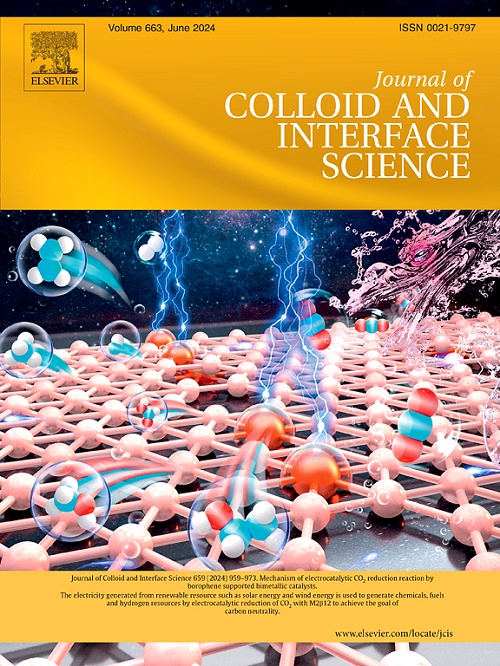Ni3Fe/NiFe2O4 heterojunction engineering and vanadium promoter synergetically accelerating urea degradation
IF 9.4
1区 化学
Q1 CHEMISTRY, PHYSICAL
引用次数: 0
Abstract
Urea oxidation reaction (UOR) is significant in reducing hydrogen production energy consumption and treating urea wastewater, necessitating the development of efficient UOR electrocatalysts. Herein, we develop a vanadium (V)-doped Ni3Fe/NiFe2O4 heterojunction (V-Ni3Fe/NiFe2O4), wherein the combined effect of V doping and the heterojunction architecture improve the material’s conductivity, facilitate electron transfer, and optimize the electronic structure of active sites. Consequently, the V-Ni3Fe/NiFe2O4 electrocatalyst requires a potential of only 1.48 V to achieve a current density of 100 mA·cm−2 and achieves ∼78 % urea degradation within 3 h. Density functional theory calculations reveal that V doping increases the density of states near the Fermi level of Ni3Fe/NiFe2O4, thereby enhancing the electron transfer capability. Moreover, the formation of the heterojunction structure improves urea adsorption and lowers the energy barrier for the UOR. This study offers valuable insights for the rational design of heterojunction-based UOR electrocatalysts.

Ni3Fe/NiFe2O4异质结工程与钒促进剂协同加速尿素降解
尿素氧化反应(UOR)在降低制氢能耗和处理尿素废水方面具有重要意义,因此需要开发高效的UOR电催化剂。在此,我们开发了钒(V)掺杂Ni3Fe/NiFe2O4异质结(V-Ni3Fe/NiFe2O4),其中V掺杂和异质结结构的共同作用提高了材料的导电性,促进了电子转移,并优化了活性位点的电子结构。因此,V-Ni3Fe/NiFe2O4电催化剂只需要1.48 V的电位就能达到100 mA·cm−2的电流密度,并在3小时内实现约78%的尿素降解。密度泛函理论计算表明,V掺杂增加了Ni3Fe/NiFe2O4费米能级附近的态密度,从而提高了电子转移能力。此外,异质结结构的形成改善了尿素吸附,降低了UOR的能垒。该研究为合理设计基于异质结的UOR电催化剂提供了有价值的见解。
本文章由计算机程序翻译,如有差异,请以英文原文为准。
求助全文
约1分钟内获得全文
求助全文
来源期刊
CiteScore
16.10
自引率
7.10%
发文量
2568
审稿时长
2 months
期刊介绍:
The Journal of Colloid and Interface Science publishes original research findings on the fundamental principles of colloid and interface science, as well as innovative applications in various fields. The criteria for publication include impact, quality, novelty, and originality.
Emphasis:
The journal emphasizes fundamental scientific innovation within the following categories:
A.Colloidal Materials and Nanomaterials
B.Soft Colloidal and Self-Assembly Systems
C.Adsorption, Catalysis, and Electrochemistry
D.Interfacial Processes, Capillarity, and Wetting
E.Biomaterials and Nanomedicine
F.Energy Conversion and Storage, and Environmental Technologies

 求助内容:
求助内容: 应助结果提醒方式:
应助结果提醒方式:


